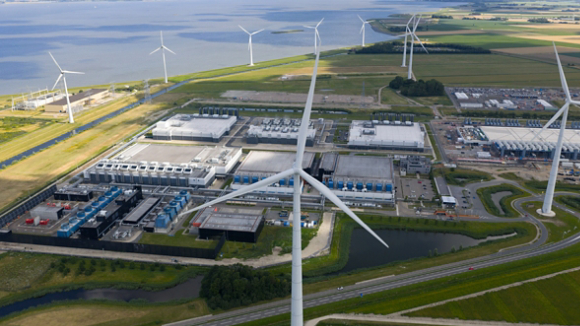February 21, 2024
Five Decarbonization Strategies for Businesses
Globally business has an opportunity to lead in the fight against climate change. Discover five strategies companies can use to reduce carbon.

As a leader in decarbonization, Trane Technologies is setting the standard for how organizations can transform operations and prioritize sustainability. Explore five proven decarbonization strategies that can help businesses reduce carbon emissions and achieve lasting results.
In the fight against climate change, businesses play a crucial role in reducing carbon emissions. Here are key decarbonization strategies for companies to cut carbon and contribute to a more sustainable future.
Energy Efficiency: The first step in decarbonization
Optimizing energy use is one of the most impactful decarbonization strategies. Businesses can decarbonize by implementing energy efficiency measures such as upgrading to LED lighting, adding building automation systems, and improving HVAC performance. These actions can reduce energy consumption by 50-75%, helping organizations achieve both sustainability and cost savings.Electrification: Powering Decarbonization Efforts
Electrification is a key component of decarbonizing business operations. Transitioning heating, cooling, and other core functions from fossil fuel-powered systems to electric alternatives, like thermal management systems, enhances efficiency and supports carbon reduction goals. Electrification also contributes to improved indoor air quality while reducing emissions.
Embrace renewable energy
Transitioning to renewable energy sources like solar and wind power further reduces carbon footprints. Companies can install on-site renewable energy systems or opt for virtual power purchase agreements to access clean power.
Reduce emissions from refrigeration and transportation
By electrifying vehicles and refrigeration units, companies can mitigate and improve emissions across the cold chain. Innovations such as all-electric solutions and alternative fuels like Hydrotreated Vegetable Oil (HVO) offer promising avenues for decarbonization.
Leverage digital technologies
Digital technologies enhance the effectiveness of decarbonization strategies. Advanced sensors, AI driven analytics, and building management systems optimize energy usage and enable predictive maintenance, leading to greater efficiency and cost savings.
By implementing these strategies, companies can play a pivotal role in the transition to a low-carbon economy. Decarbonizing business not only mitigates climate change but also fosters innovation, resilience and long-term sustainability.
Topic Tags

 English
English




















